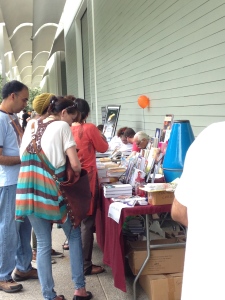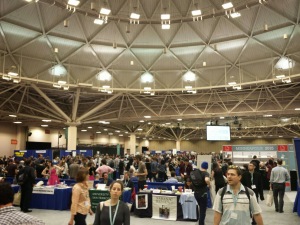Another Country, Near and Far: Henríquez and James Read in H-Town
April 28, 2015, by Doni Wilson
 Once again, I am running late, headlights mocking me as I creep up 59. But then, a break, and I fly to Louisiana Street and head to a restaurant for Inprint’s Books & Bellinis, a young professionals mixer, before the Inprint reading. My Multicultural Literature students are coming tonight, too. We are all excited: we do not know these writers reading tonight.
Once again, I am running late, headlights mocking me as I creep up 59. But then, a break, and I fly to Louisiana Street and head to a restaurant for Inprint’s Books & Bellinis, a young professionals mixer, before the Inprint reading. My Multicultural Literature students are coming tonight, too. We are all excited: we do not know these writers reading tonight.
What I mean is that we don’t know them yet.
I meet some new friends—or writers I know from Facebook–in person, and let me tell you, in person is better. Two of my friends win books at the party and I feel happy for them: what is better than a new book, by a new writer, that you have never read?
Well, not much.
I walk with my friend Elizabeth to The Wortham Center and see my students. They look so grown up to me—we have read a lot of books together. Some of them are graduating in May. I am not sure if I am ready for it, not sure if I am ready for them to emigrate from the benevolent despotism of my classroom to The Next Big Thing. No wonder people stay in college forever. There are worse countries to visit, hang around, linger. Everyone migrates somewhere; even the suburbs of Houston seem like independent states sometimes, each a new country, with languages that I cannot recognize at times. That is because so many people from so many different countries come to Houston: it is ever changing, kaleidoscopic, never boring. Continue reading






